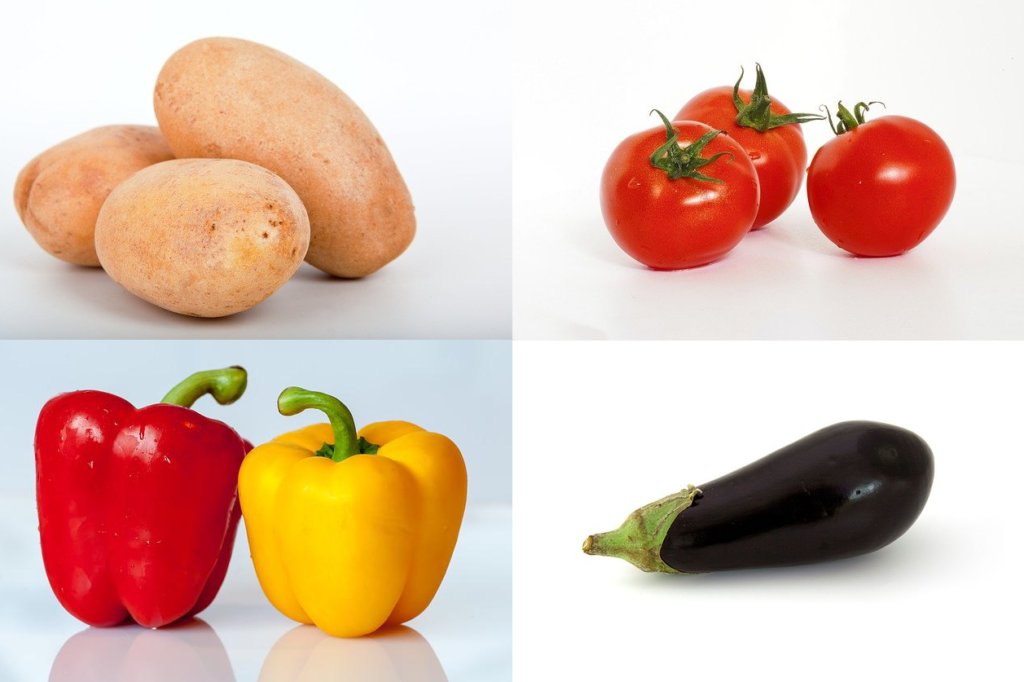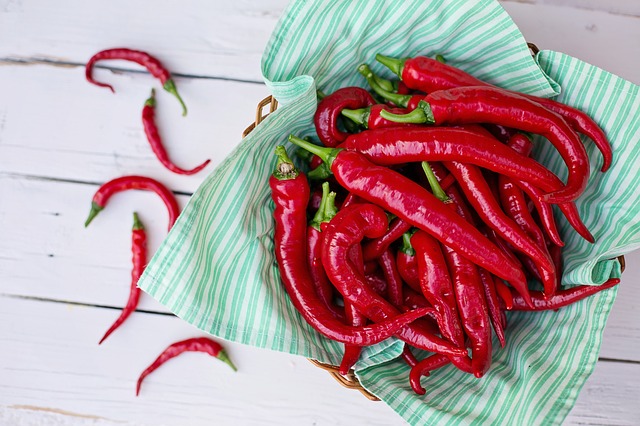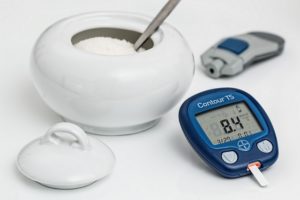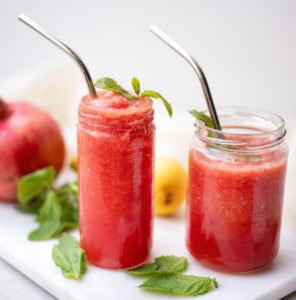Do Nightshade-Family Vegetables Cause Inflammation?

The nightshade-vegetable family includes tomatoes, potatoes, peppers and eggplant. In health circles, there has long been a bias against nightshade-family vegetables under the assumption that they can worsen arthritis and inflammation. For the most part, the research doesn’t appear to confirm the association, although with some potential exceptions. Here’s what we know:
Tomatoes
Part of the bias against nightshade vegetables may stem back to the long-held belief in the early United States that tomatoes were toxic. The tomato originated in Peru and was brought back to Europe where it quickly became a staple of European cuisine. However, up through the 1800s, Americans actively believed that tomatoes were poisonous and shunned them. Other nightshade plants, including belladonna and mandrake are highly toxic, and since tomatoes were in the same family, they were also assumed to be toxic (Goodwin 1984).
On the whole, the latest research appears to imply that tomatoes, in general, have anti-inflammatory effects. In a group of volunteers, drinking a tomato beverage daily reduced a marker of inflammation by more than one-third (Riso 2006). Tomato juice has also been shown to significantly decrease inflammation in overweight females (Ghavipour 2013). A small study in men and women showed that processed tomato products decreased inflammation after a high fat meal which might be beneficial for preventing heart disease (Burton-Freeman 2012).
While certain individuals may have idiosyncratic reactions to tomatoes, in general, they appear to be anti-inflammatory.
Potatoes
As a vegetable, potatoes are often dismissed for two reasons: their high carbohydrate content and the fact that they are a nightshade-family vegetable. Potatoes come with different colors of flesh, from white to yellow to purple. As a source of fiber, potatoes are high in resistant starch, a compound known to improve gut flora and decrease inflammation (Kingbell 2019). The amount of resistant starch can vary by preparation and is highest in raw potatoes (Mishra 2008). Resistant starch also increases if potatoes are kept in the refrigerator after cooking.
Colored potatoes have also been shown to have anti-inflammatory benefits, more so than white potatoes. A study in healthy men showed decreased inflammation and DNA damage after six weeks of daily yellow or purple-potato consumption (Kaspar 2011). In an animal model of inflammatory bowel disease, consumption of baked and then freeze-dried purple potatoes decreased gastrointestinal inflammation (Li 2021).
However, potatoes do contain compounds that also appear to be potentially irritating to the gastrointestinal tract. While more research is needed, animal studies found that fried potato skins increased inflammation in the large intestine while also increasing intestinal permeability or leaky gut (Iablokov 2010). Early research also found that compounds in potatoes could worsen inflammatory bowel disease in animals (Patel 2002).
For people without gastrointestinal problems, purple and yellow potatoes likely hold anti-inflammatory benefits with their consumption. For individuals with gastrointestinal issues, I’d be cautious about excessive potato consumption, especially fried potatoes, as frying appears to increase the problematic compounds (Iablokov 2010).
Peppers

Peppers include bell peppers and hot peppers. And all peppers are in the nightshade family. For years, topical capsaicin, the compound found in hot peppers that gives them their kick, has been used in topical creams to decrease pain. While the treatment can work (Vieira 2022), a small percentage of individuals cannot stand the initial burning sensation from the cream itself.
While the studies on bell peppers and inflammation are few, one study of bell pepper juice consumed twice daily combined with yoga was better at controlling after meal blood sugar and blood pressure than yoga alone. The study was done in diabetics for only four days and didn’t directly measure inflammation. However, inflammation typically increases blood sugar and blood pressure, and bell-pepper juice did the reverse. Animal studies also appear to confirm pain relieving and anti-inflammatory effects of bell peppers (Mazher 2021).
Other research on hot pepper has also found at least short-term reductions in blood glucose with its use (Chaiyasit 2009). Similar to bell pepper, hot pepper and capsaicin (the hot compound in peppers) have both been shown to have pain-relieving and anti-inflammatory properties in animal research (Ojewole 2013). It’s worth noting that on initial direct exposure to capsaicin, there is an inflammatory response, but on repeated exposure, the effect becomes anti-inflammatory (De 1988). Capsaicin has also been known to inhibit aspects of inflammatory signaling (Singh 1996).
Eggplant
While an early study that force fed hamsters eggplant in large quantities found that one of two hamsters developed mild gastrointestinal inflammation (Baker 1989), some newer studies have shown anti-inflammatory effects. In rats fed a high-fat diet, the addition of eggplant decreased liver inflammation (Nwanna 2018). Water extracts of eggplant have also been shown to suppress swelling and inflammation in mice (Han 2003).
In a dietary analysis of patients with rheumatoid arthritis, just under one-third of patients reported that eating eggplant made their arthritis worse (Amani 2009). While interesting, more objective measures of increased inflammation with eggplant consumption would strengthen the case. Studies have found that people often self-report food allergies, yet allergic response rates found on blinded food challenges are significantly lower (Nwaru 2014). There may be individuals that have negative reactions to eggplant, but the evidence is not strong on this point and deserves further research.
Individual Reactions Could Vary
The data for tomatoes and chili peppers shows that they are typically anti-inflammatory. As for eggplant and potatoes, some minimal data suggests that they may have inflammatory effects on the gut if eaten in large quantities or fried, although other studies do suggest anti-inflammatory effects as well. Yellow and purple potatoes appear to be more strongly anti-inflammatory than white. While most of the data suggests anti-inflammatory effects for nightshade family vegetables, it is still possible that some people could have negative responses, either allergic or otherwise.
Having worked in pain medicine, I often talked with patients about dietary changes to help reduce chronic pain. While nightshade vegetables were sometimes discussed, reducing sugar, simple carbohydrates and processed foods was of much higher importance. Some patients swore that their pain was worsened by one of the nightshade-family vegetables, but these cases were not common. Initially, I would always focus on improving the diet in general, not on removing nightshade family vegetables.
Conclusion
While the data is not overly conclusive, it’s likely that for the majority of individuals, consuming reasonable quantities of nightshade family vegetables, including tomatoes, peppers, eggplant and potatoes, does not contribute to inflammation. In many cases, consuming these vegetables appears to decrease inflammation. While it is possible that some people may react negatively, especially to potatoes and eggplant, avoiding fried versions and excessive quantities will likely minimize problems.




Thank you for the information. I’m always looking for a way to take care of this body as naturally as possible.